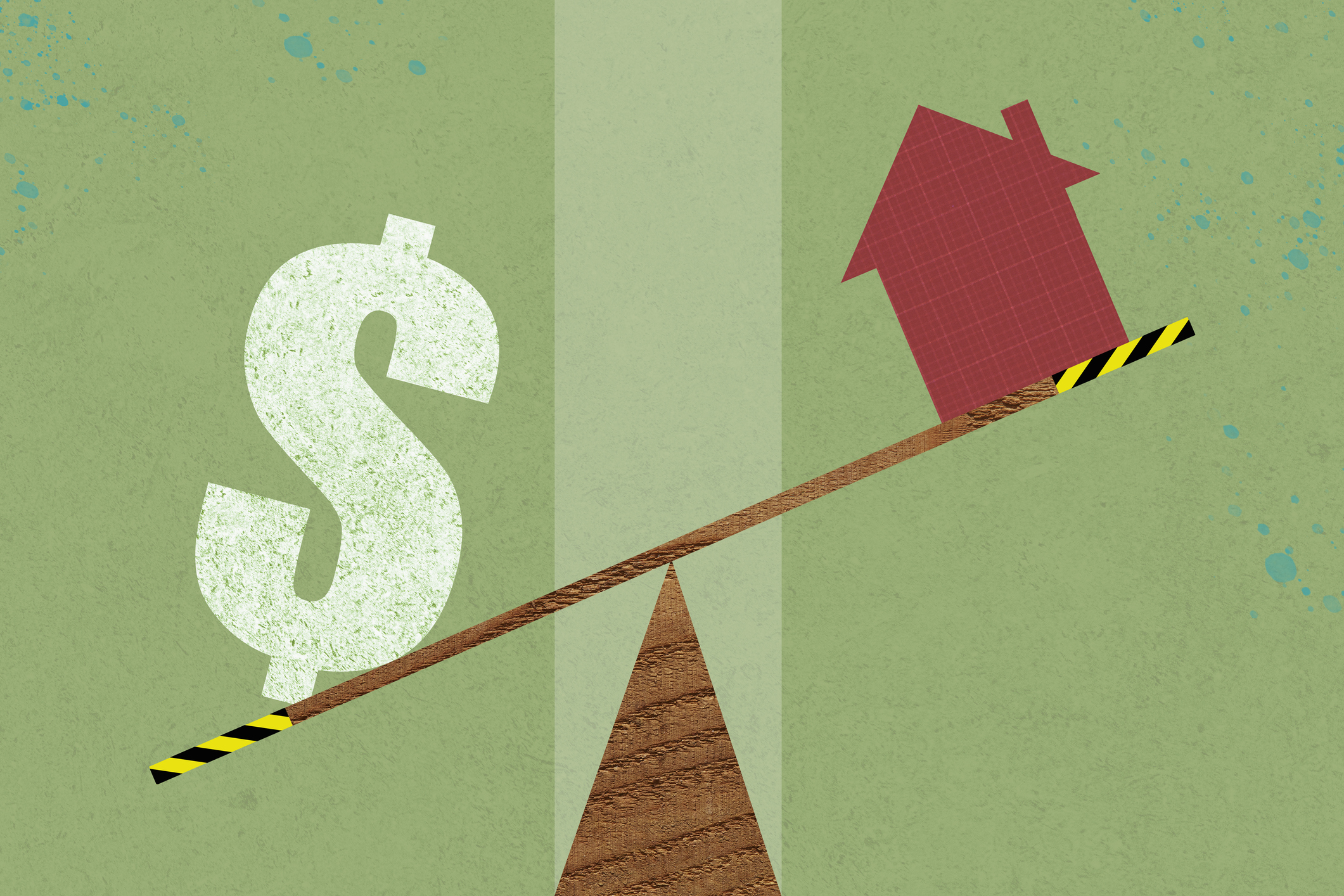Steep Mortgage Rates Stunt Home Buying Power
The high-rate environment of today’s housing market leaves potential homebuyers with less purchasing power than last year, study shows.


Rising mortgage rates and inflationary pressures have hit the housing market substantially over the last year, leaving homebuyers with considerably less purchasing power than in 2022, a new report shows.
Although the Federal Reserve has paused its rate-hiking campaign, mortgage rates remain elevated. As of October 11, the average 30-year mortgage rate stands at 7.83%, according to Bankrate — near more than 22-year highs. A recent report from Redfin shows mortgage rates have climbed from 6.6% to 7.7% year over year. Mortgage rates directly impact the monthly housing payment new home buyers are responsible for. As such, budgets won’t stretch nearly as far as they did last year.
For example, the lower rates of early 2022 (about 3.5%) with a $3,000 monthly payment budget would have allowed for a home priced at $595,000. Purchasing a home today with a 7.7% interest rate and the same monthly payment budget would only buy you a $419,000 home. That’s a drop of $176,000 in purchasing power over less than two years.
From just $107.88 $24.99 for Kiplinger Personal Finance
Become a smarter, better informed investor. Subscribe from just $107.88 $24.99, plus get up to 4 Special Issues

Sign up for Kiplinger’s Free Newsletters
Profit and prosper with the best of expert advice on investing, taxes, retirement, personal finance and more - straight to your e-mail.
Profit and prosper with the best of expert advice - straight to your e-mail.
For a closer year-over-year comparison, October of 2022 saw rates at around 6.6%. If you bought a home at that time, you’d still be able to afford almost $40,000 more than today’s buyers. That $3,000 monthly budget would’ve allowed a home purchase of $457,000.
High prices and low inventory
Buyers willing to brave the high-rate environment will also need to brace for sticker shock as home prices have risen as well. With housing inventory still struggling to reach a balanced supply, the remaining home sellers on the market are asking for more.
In the four weeks ending October 1st, the median sale price for U.S. homes overshot last year’s prices by 2.9% at approximately $371,000, according to Redfin’s latest report. The asking price for those homes was even higher at almost $390,000 — a 4.6% increase from 2022. So while high rates are deterring many buyers, the inventory crunch is helping inflate the prices of homes hitting the market and making it more expensive than ever to purchase a home.
Redfin’s report also found that monthly mortgage payments are at the highest recorded level. During the reporting period ending October 1st, the median monthly mortgage payment was $2,710 — up by 10% from last year.
Use our tool, in partnership with Bankrate, to compare mortgage rates from different lenders.
Inventory inching higher
Although housing inventory has been slow to catch up with demand, there was a recent bump in the supply. September’s additions to the housing market created the highest number of months in supply since March. Typically the benchmark is four-to-five months of supply, and currently, we’re at 3.3 months. Inventory still isn’t ideal for potential buyers since sellers have the upper hand, but it’s an improvement nonetheless.
Related Content
Profit and prosper with the best of Kiplinger's advice on investing, taxes, retirement, personal finance and much more. Delivered daily. Enter your email in the box and click Sign Me Up.

Seychelle is a seasoned financial professional turned personal finance writer. She’s passionate about empowering people to make smart financial decisions by combining 10 years of finance industry experience with solid research and a wealth of knowledge. Seychelle is also a Nav-certified credit and lending expert who has explored money topics such as debt consolidation, budgeting, credit, and lending in her work for publications including GOBankingRates, LendEDU, and Credible.
-
 Your Guide to Buying Art Online
Your Guide to Buying Art OnlineFrom virtual galleries to social media platforms, the internet offers plenty of places to shop for paintings, sculptures and other artwork without breaking the bank.
-
 Samsung Galaxy S25 Ultra for $4.99 a Month: A Closer Look at Verizon’s Deal
Samsung Galaxy S25 Ultra for $4.99 a Month: A Closer Look at Verizon’s DealVerizon’s aggressive pricing makes Samsung’s top-tier phone tempting, but the real cost depends on your plan and how long you stay.
-
 I'm 59 with $1.7 million saved and lost my job. Should I retire?
I'm 59 with $1.7 million saved and lost my job. Should I retire?We asked professional wealth planners for advice.
-
 How Much Income You Really Need to Afford a $500,000 Home
How Much Income You Really Need to Afford a $500,000 HomeAs home prices increase, the income needed for a house is also climbing. We break down what you need to earn to afford a $500,000 home.
-
 How Much Would a $50,000 HELOC Cost Per Month?
How Much Would a $50,000 HELOC Cost Per Month?Thinking about tapping your home’s equity? Here’s what a $50,000 HELOC might cost you each month based on current rates.
-
 Should You Tap Your Home Equity Before 2026?
Should You Tap Your Home Equity Before 2026?As borrowing rates and tax law shifts converge, here's what homeowners need to know before pulling equity out of their home.
-
 What to Know About Portable Mortgages
What to Know About Portable MortgagesA closer look at how portable mortgages would work, who might benefit and why the concept is gaining attention amid high rates and limited supply.
-
 A New Kind of HELOC Lets Homeowners Fund Remodels on Their Terms
A New Kind of HELOC Lets Homeowners Fund Remodels on Their TermsFinance home upgrades gradually, using the equity you already have.
-
 Selling a Haunted House? What You Have to Tell Buyers (and What You Don’t)
Selling a Haunted House? What You Have to Tell Buyers (and What You Don’t)You don’t need ghosts to spook buyers, sometimes a home’s past is enough. Here’s what sellers should know about disclosure laws, pricing and perception when a property has a haunted history.
-
 A Vacation Home Sounds Dreamy, But Is It the Right Move for You?
A Vacation Home Sounds Dreamy, But Is It the Right Move for You?A vacation home can be a relaxing getaway or a financial burden. Learn the pros and cons of owning a second home and how to decide if it fits your goals.
-
 Planning a Major Home Renovation? 3 Smart Ways to Finance It
Planning a Major Home Renovation? 3 Smart Ways to Finance ItFrom HELOCs to personal loans, here’s how to pay for a major home renovation without draining your savings.